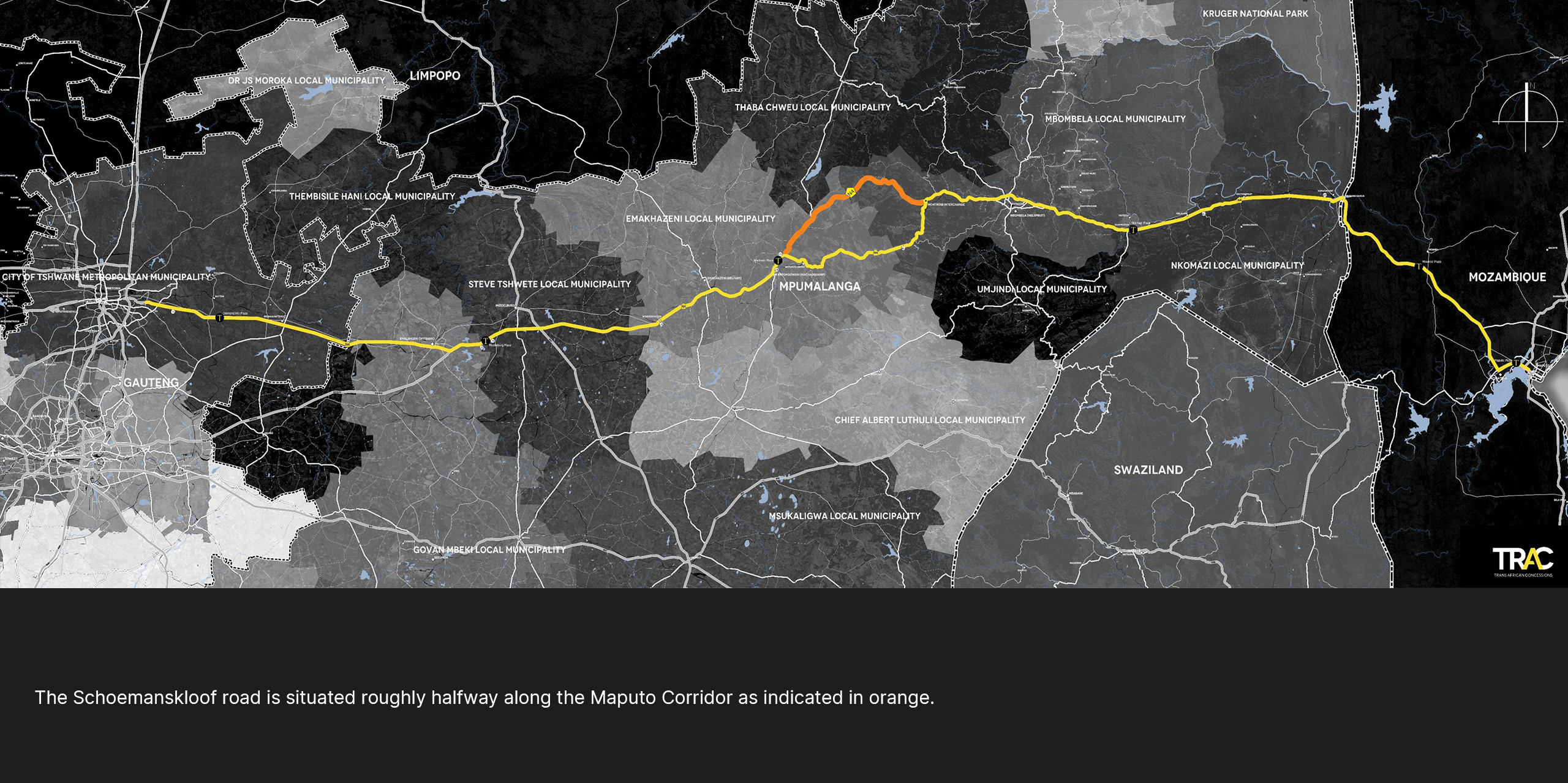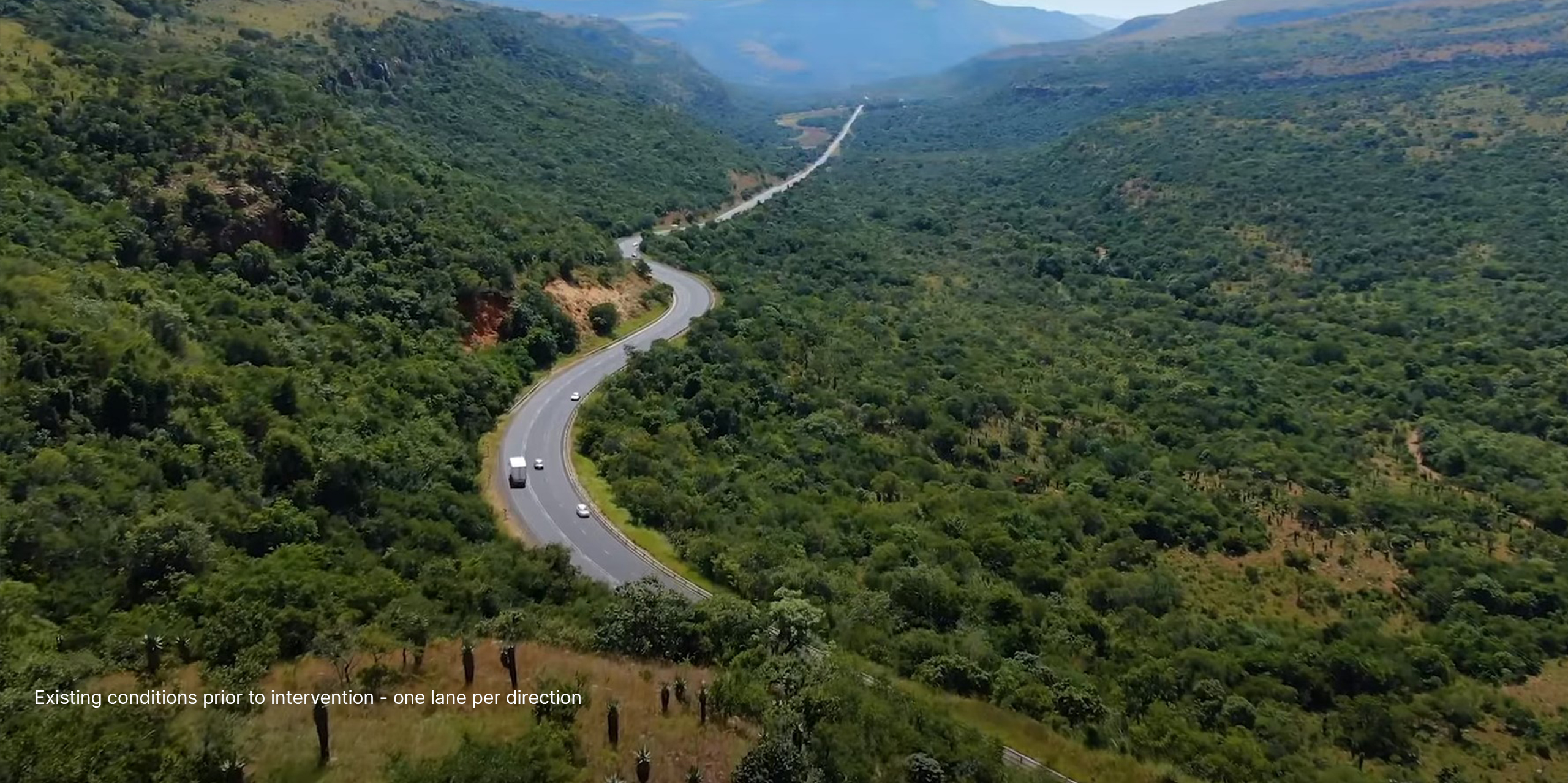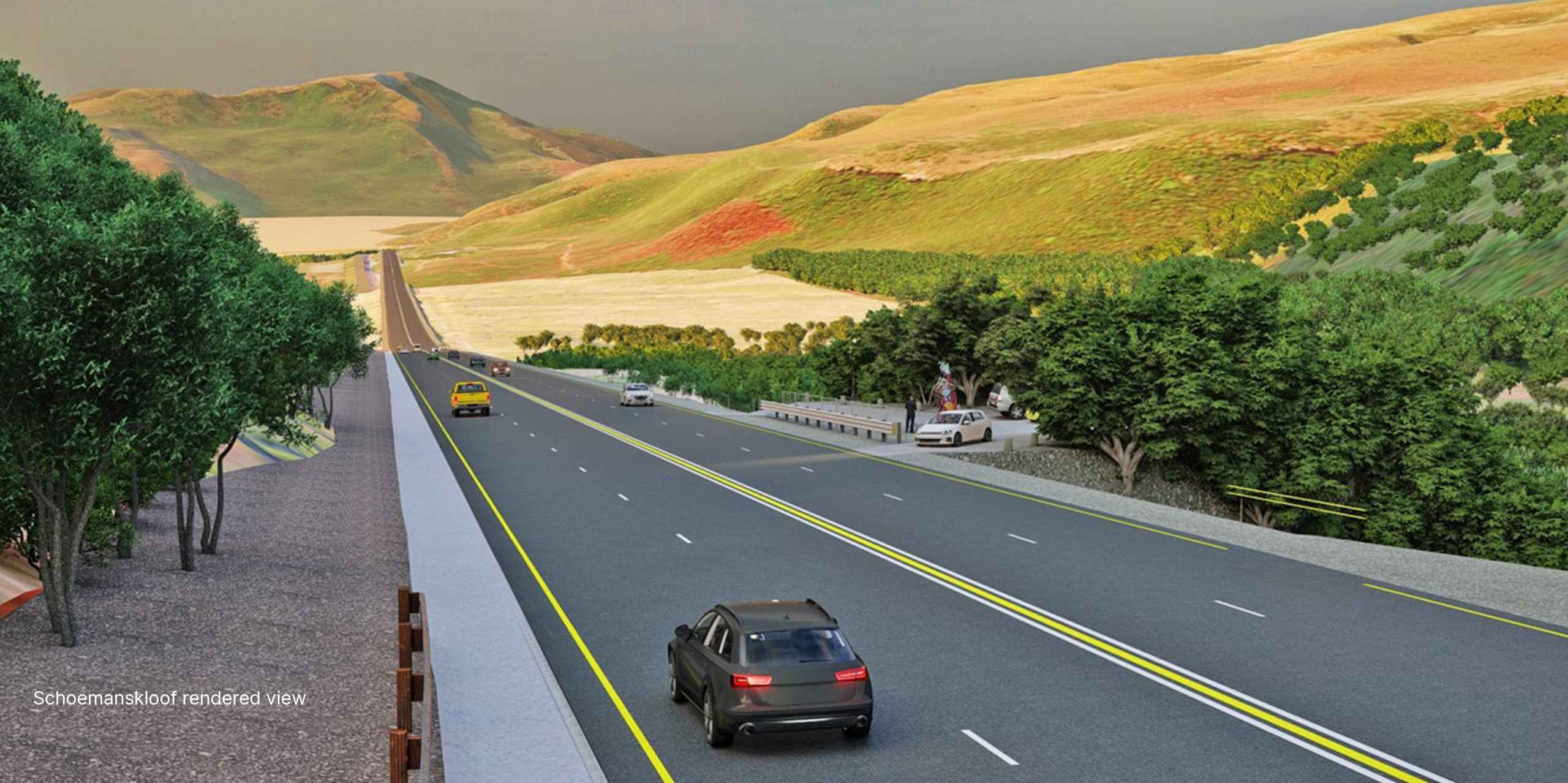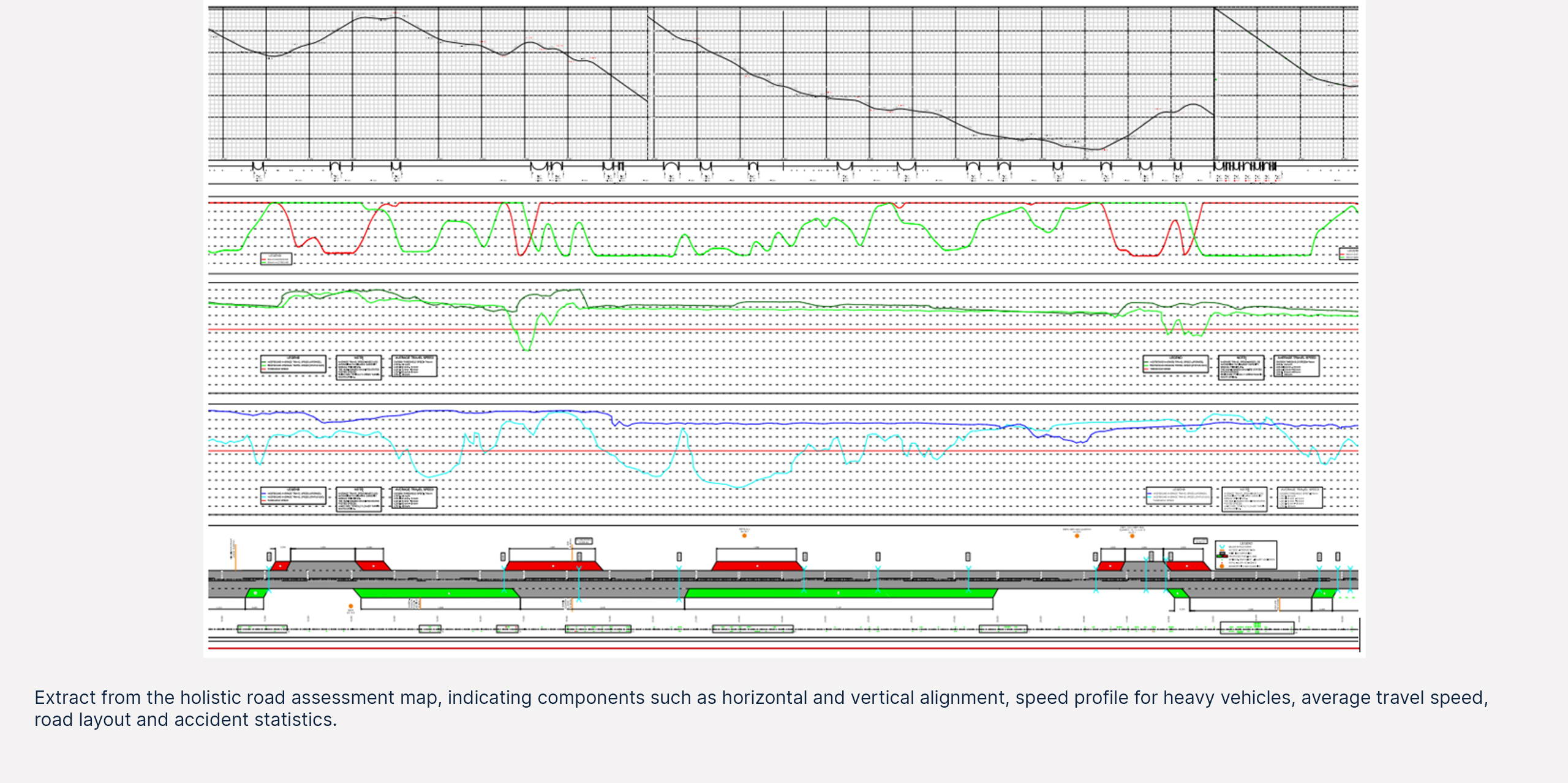
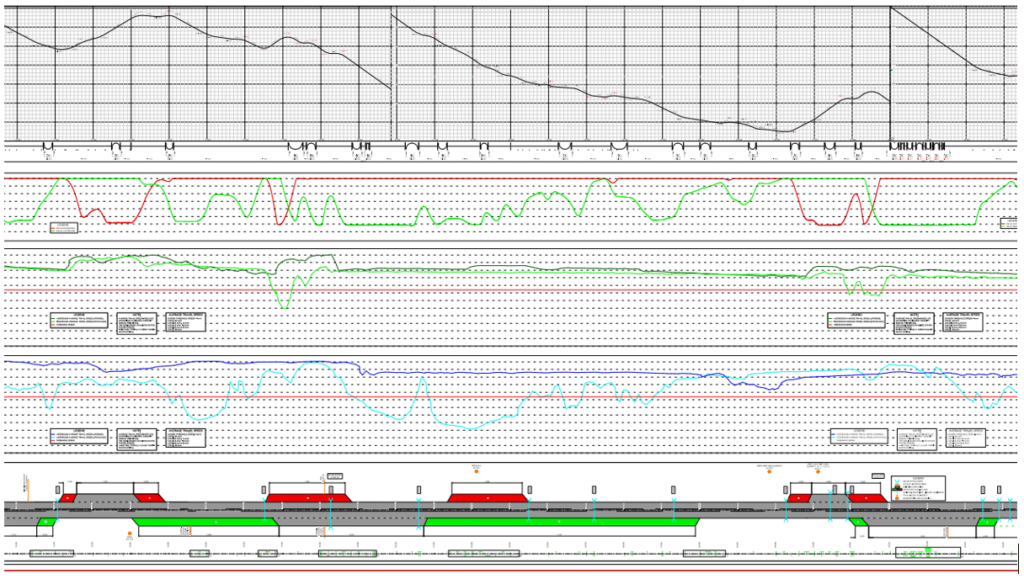
Extract from the holistic road assessment map, indicating components such as horizontal and vertical alignment, speed profile for heavy vehicles, average travel speed, road layout and accident statistics.
Impact
The Schoemanskloof Upgrade Strategy resulted in several key achievements:
- Upgrade Cross-Section: The existing lane width and pavement structure were retained where possible, minimising costs and environmental impact.
- Passing Lanes: The strategic placement of passing and climbing lanes was based on their effectiveness in alleviating traffic congestion and improving the level of service. An additional 15.5 km of eastbound passing lanes and 22.5 km of westbound passing lanes were proposed.
- Level of Service Improvement: Microsimulation results demonstrated a significant improvement in level of service, exceeding expectations and potentially diverting traffic from alternative routes with poorer LOS.
The Schoemanskloof Upgrade Study showcases a new and innovative approach to rural two-lane road upgrade planning. By considering all critical factors holistically, this approach not only ensures cost-effective upgrades, but also enhances road safety, reduces travel time, and improves the overall road user experience.
Considering the South African National Roads Agency Limited’s expanding national road network, encompassing approximately 35 000 km, and given that a significant proportion of these roads consists of two-lane highways, the learnings from this study should be considered for future upgrade projects. By approaching the upgrade of two-lane highways holistically and through careful planning, SANRAL could arguably maximise its return on investment in terms of road user benefits per Rand spent.
